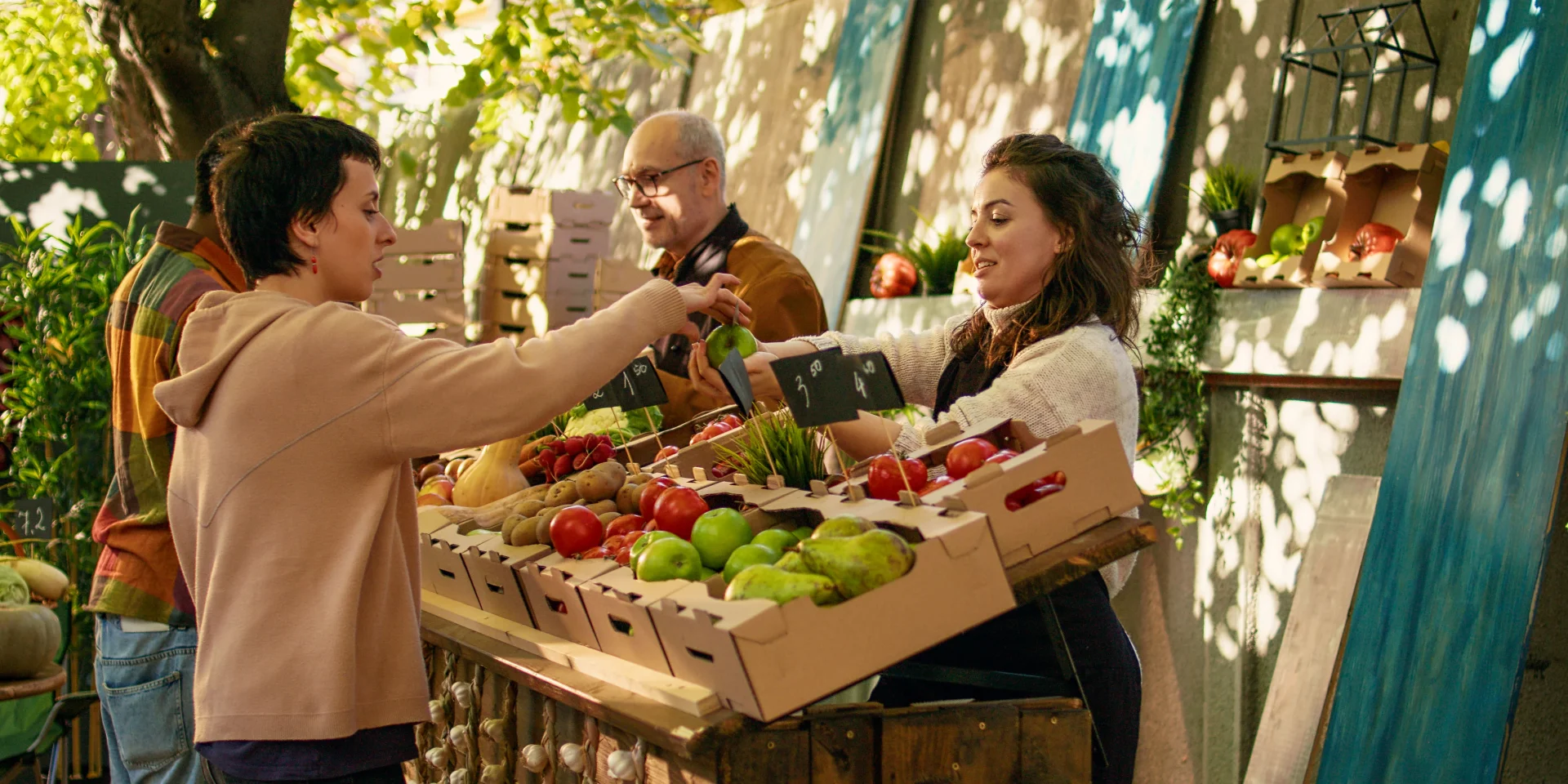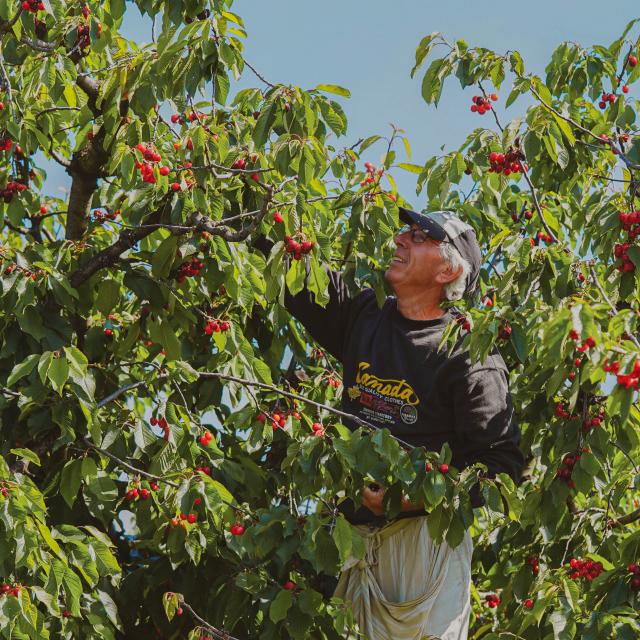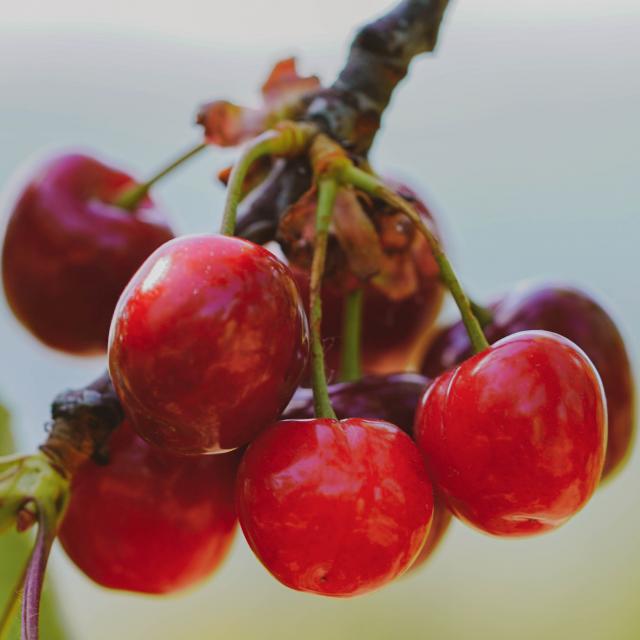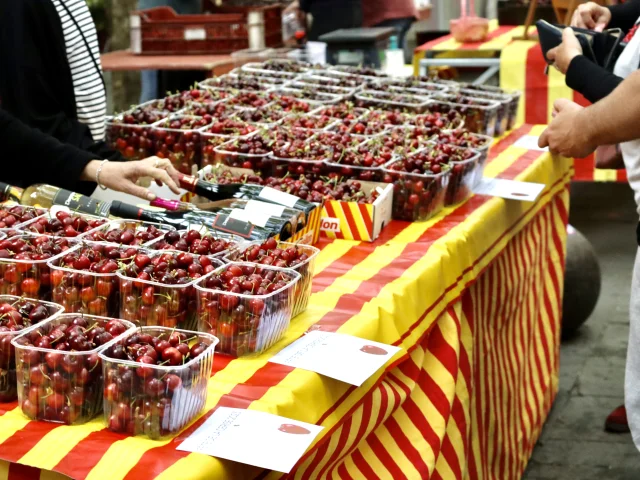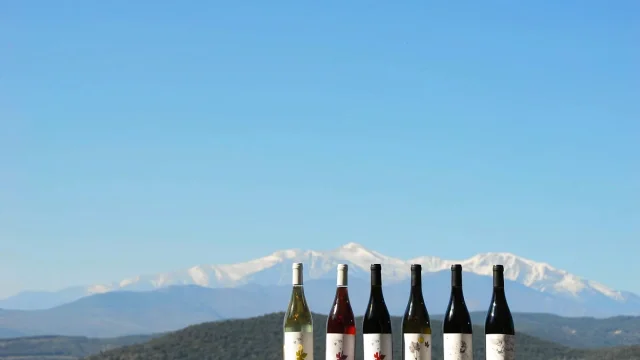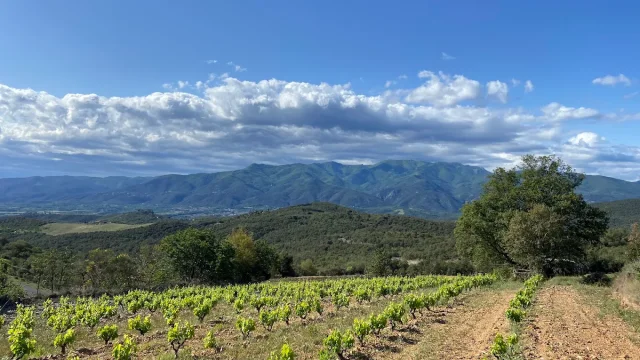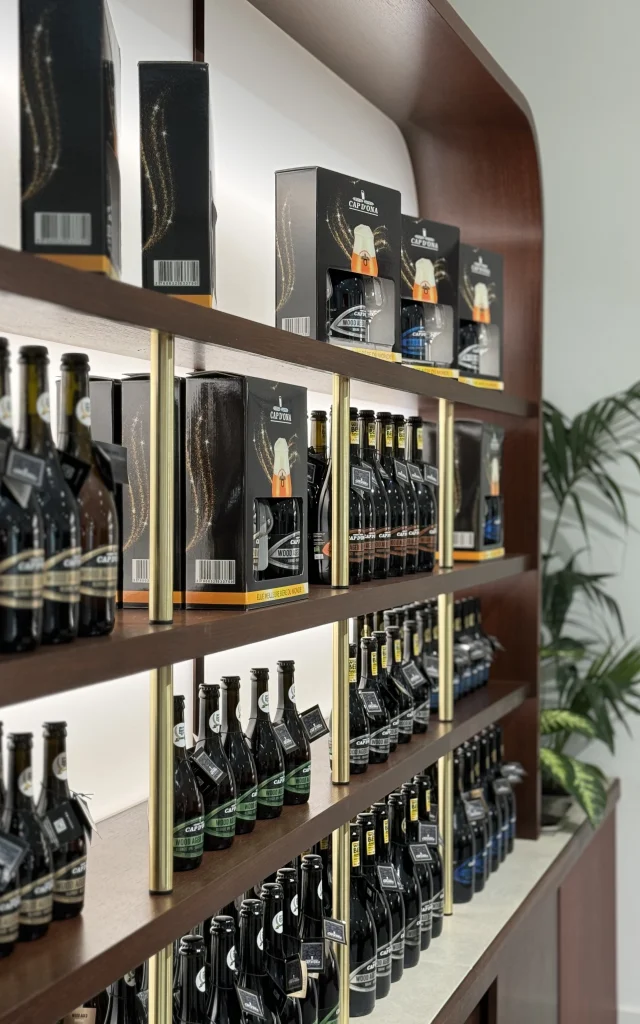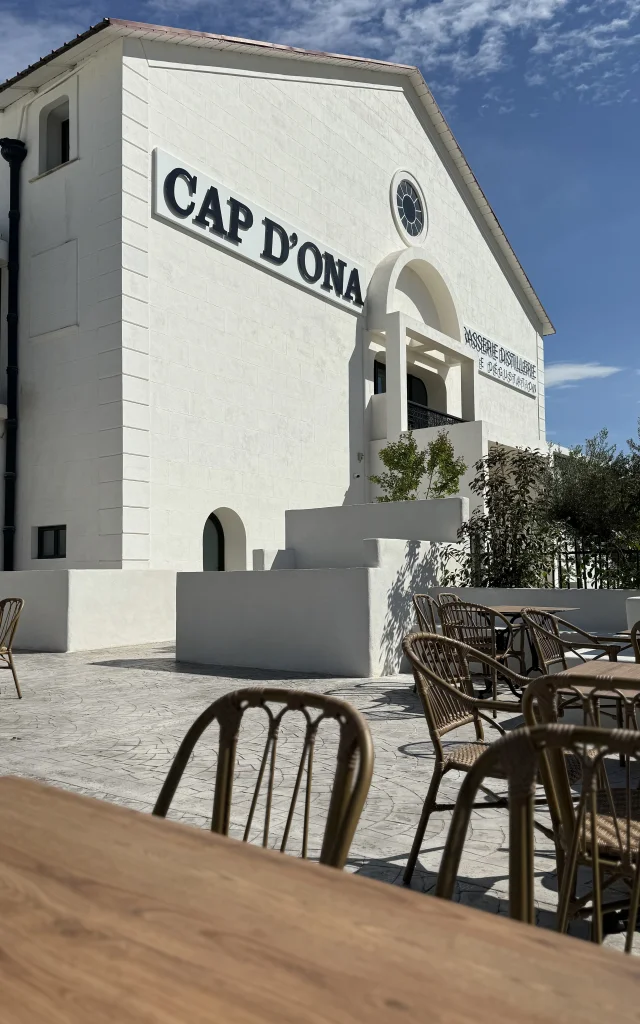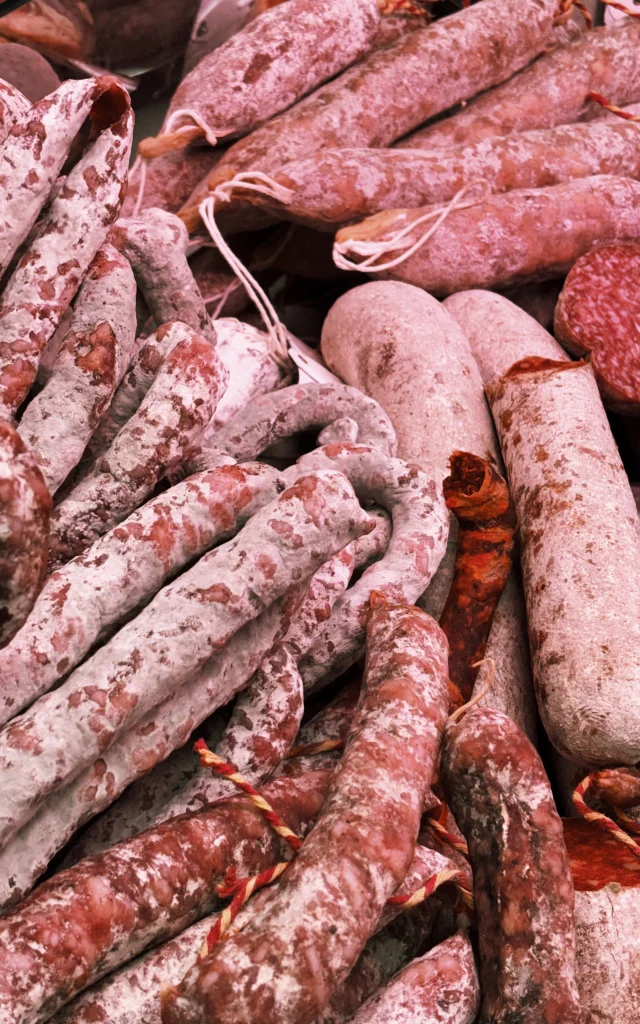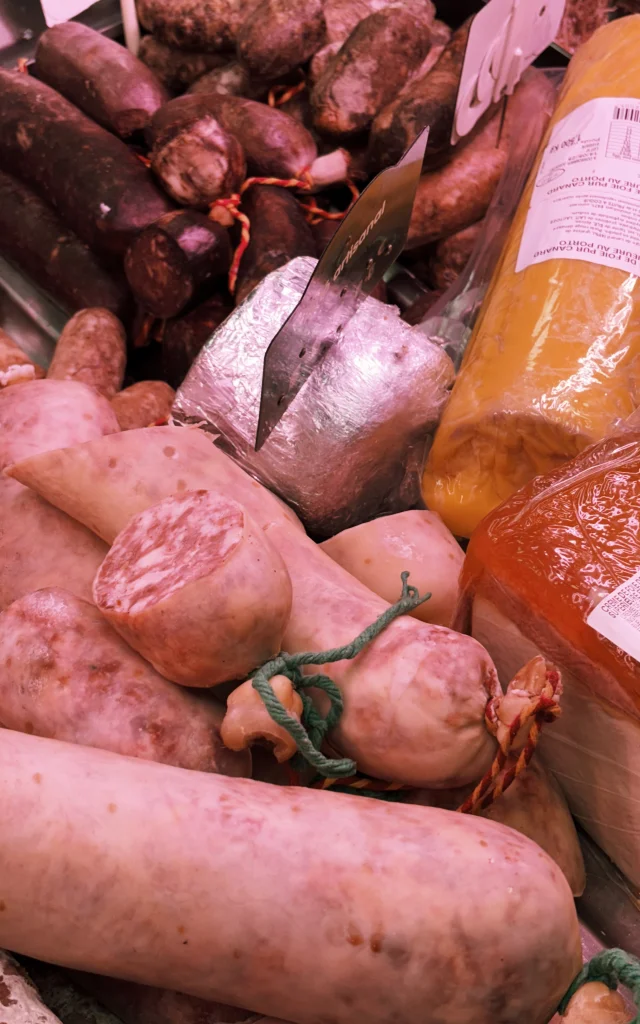The cherrySymbol of the town of Céret
For more than 150 years, this fruit has found its ideal terroir and climate in this part of Vallespir. Indeed, this production zone, the southernmost in France, has light, filtering soils, slightly piedmont-like. Spring is mild, with little wind. This favors good flowering and very early ripening.
By mid-March, Céret is dressed in white, with its many fields of cherry blossom. It’s like an open-air painting! From mid-April onwards, gourmets can look forward to tasting France’s first cherries!
Numerous producers are present in the region to ensure the production and harvesting of this precious sesame. A quality charter has also been created by a producers’ union under the “Primélice” brand.
For many years now, every year the President of the Republic has received a crate of this flagship Vallespir fruit!
